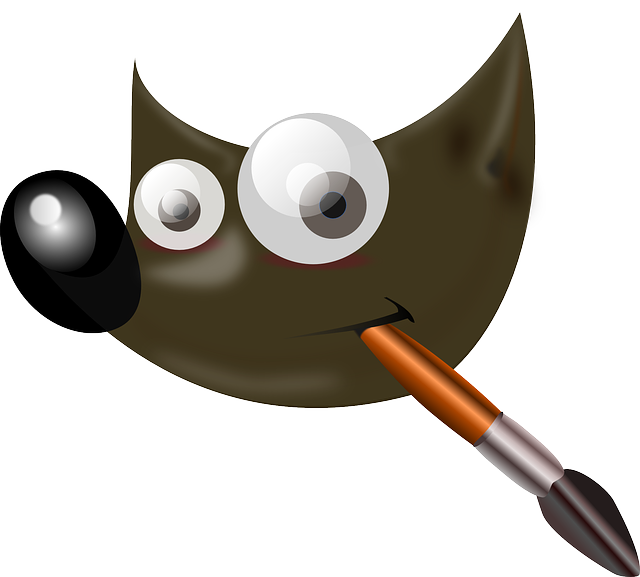If you’re an Archman user looking to take your editing skills to the next level, then you’ll want to pay attention to the following article. GIMP (GNU Image Manipulation Program) is a powerful open-source image editing tool that is widely used in the Linux community. In this article, we will discuss advanced techniques, tips, and insider secrets for maximizing your editing capabilities with GIMP in Archman. Whether you’re a beginner looking to learn the basics or a seasoned pro in need of some new tricks, this article has something for everyone. Let’s unlock the power of GIMP in Archman together.
- 1. Advanced GIMP Techniques for Enhanced Editing in Archman
- 2. Unlocking the Power of GIMP: Tips and Tricks for Archman Users
- 3. Mastering GIMP Features in Archman: Insider Secrets Revealed
1. Advanced GIMP Techniques for Enhanced Editing in Archman

GIMP, the GNU Image Manipulation Program, is a powerful tool for editing and manipulating images. In Archman, a Linux distribution based on Arch Linux, users have access to a wide range of advanced GIMP techniques that can take their editing skills to the next level.
One advanced technique that users can utilize in GIMP on Archman is the use of layers. Layers allow users to stack different elements of an image on top of each other, making it easier to make precise edits without affecting the entire image. This technique is especially useful for tasks such as retouching photos, adding text or graphics, and creating complex compositions.
Another advanced technique in GIMP is the use of masks. Masks allow users to selectively edit specific areas of an image without affecting the rest of the image. This can be useful for tasks such as removing backgrounds, adjusting the exposure of certain areas, or blending multiple images together seamlessly.
Furthermore, Archman users can take advantage of GIMP’s advanced selection tools, such as the paths tool and the fuzzy select tool, to make precise selections and edits in their images. These tools allow users to create complex shapes and selections, making it easier to edit specific areas of an image accurately.
Overall, by mastering these advanced GIMP techniques in Archman, users can enhance their editing skills and create stunning images with ease. Whether you are a beginner looking to improve your editing skills or a seasoned pro wanting to take your work to the next level, GIMP in Archman offers a wide range of tools and features to help you achieve your creative vision.
2. Unlocking the Power of GIMP: Tips and Tricks for Archman Users

GIMP, or the GNU Image Manipulation Program, is a powerful open-source image editing software that is popular among Archman users. With its wide range of tools and capabilities, GIMP offers endless possibilities for manipulating and enhancing your images. In this section, we’ll explore some tips and tricks for unlocking the full potential of GIMP for Archman users.
One useful tip for Archman users is to take advantage of GIMP’s customizable interface. By rearranging the toolbars, panels, and windows to suit your workflow, you can streamline your editing process and make GIMP work more efficiently for you. Customizing keyboard shortcuts can also save time and improve your productivity when working with GIMP in Archman.
Another helpful trick for Archman users is to explore the wide range of plugins and extensions available for GIMP. These add-ons can extend the functionality of GIMP and provide additional tools and effects for your editing projects. Whether you’re looking for new filters, brushes, or script-fu scripts, there’s likely a plugin available to help you achieve your desired results in GIMP.
Additionally, mastering layer management in GIMP is essential for Archman users looking to create complex and professional-looking edits. Understanding how to work with layers, masks, and blend modes can help you achieve more advanced and creative results in your image editing projects. Experimenting with different layer blending modes and opacity settings can also lead to unique and visually appealing outcomes in GIMP.
Overall, by utilizing these tips and tricks, Archman users can unlock the full power of GIMP and take their image editing skills to the next level. Experimenting with customization options, exploring plugins, and mastering layer management are just a few ways to make the most of GIMP’s capabilities for Archman users.
3. Mastering GIMP Features in Archman: Insider Secrets Revealed

GIMP, the GNU Image Manipulation Program, is a powerful tool for editing and creating digital images. When using GIMP in Archman, there are a few insider secrets that can help you master its features and take your editing skills to the next level.
One insider secret is utilizing layer masks to create complex and detailed edits. Layer masks allow you to selectively hide or reveal parts of a layer, giving you precise control over your edits. By mastering layer masks in GIMP, you can seamlessly blend multiple images together, create stunning composite images, and achieve professional-looking results.
Another insider tip is using the brush dynamics feature in GIMP to add depth and texture to your images. Brush dynamics allow you to customize the behavior of your brushes, such as varying the size, angle, and opacity based on factors like pressure sensitivity or velocity. By experimenting with brush dynamics in GIMP, you can add realism and dynamism to your digital artwork.
Lastly, taking advantage of GIMP’s powerful selection tools can drastically improve your editing workflow. Tools like the path tool, fuzzy select tool, and quick mask mode allow you to accurately select and manipulate specific areas of your image. By mastering these selection tools in GIMP, you can quickly isolate objects, remove backgrounds, and make precise adjustments to your photos.
By incorporating these insider secrets into your editing process, you can enhance your skills with GIMP in Archman and unlock the full potential of this versatile program. Experiment with these tips and tricks to take your digital editing to the next level.



